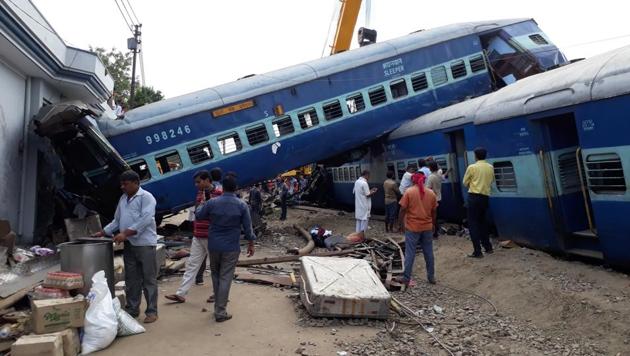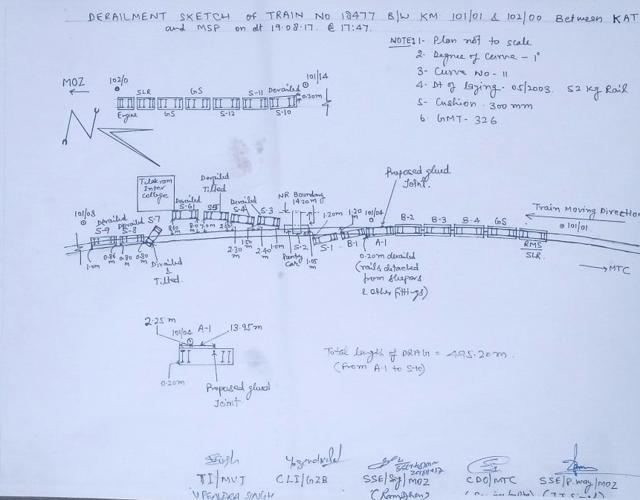Utkal Express tragedy: Blame game begins as inspection team alleges negligence
A sketch drawn out by experts with the team showed that while the engine and five coaches managed to cross the damaged portion of the track, the 12 compartments in tow were dragged for up to 495 metres before finally coming to a halt.
A joint inspection team probing the derailment of the Kalinga Utkal Express, which left 23 dead and 156 injured on Saturday evening, has observed several glaring lapses that could have led to the tragedy.

The accident occurred a few hundred metres away from the Khatauli railway station.
A sketch drawn out by experts with the team showed that while the engine and five coaches managed to cross the damaged portion of the track, the 12 compartments (from coaches S-10 to A1) in tow were dragged for up to 495 metres before finally coming to a halt.
The sixth and seventh coaches (S-9 and S-10) were separated by 295 metres, and the S-2 compartment was found lying on the train’s pantry car.
The joint inspection team comprised Meerut Cantonment traffic inspector Upendra Singh, Ghaziabad chief loco inspector Yogendra Pal, Muzaffarnagar senior section engineer (signal) Rom Dhan, Meerut coaching depot officer Sanjay Gupta and Muzaffarnagar senior section engineer (PW) JJ Singh.

The report submitted by the joint inspection team held officials with the permanent way (PW) department, who undertake maintenance of the railway track, responsible for the accident. However, one of its members – JJ Singh – opposed the findings.
Singh said in a dissenting note that the PW department had sought an additional 20 minutes’ time to replace the glued joints on the railway track, but the Khatauli station master refused to consider its request. He said a member of the signal department was also present at the spot.
The Delhi-Saharanpur Express crossed that stretch of the railway track at 4.57 pm, 49 minutes before the ill-fated Utkal Express arrived around 5.46 pm.
But the other members of the joint inspection team dismissed Singh’s objections, stating that PW officials cut the railway track using a power hacksaw without acquiring due permission. They made no attempt at trying to stop the train either, the report added.
A source said certain emergency situations allow the cutting of railway tracks without taking the permission of the station master concerned, but specific rules have been laid down for such occasions. “In such cases, a PW staffer has to post a red flag 650 metres from the repair site and a second one is required to stand 45 metres away with another red flag to ensure that the driver stops the train,” he explained. “A great tragedy could have been averted if the PW staff had followed this simple exercise.”





